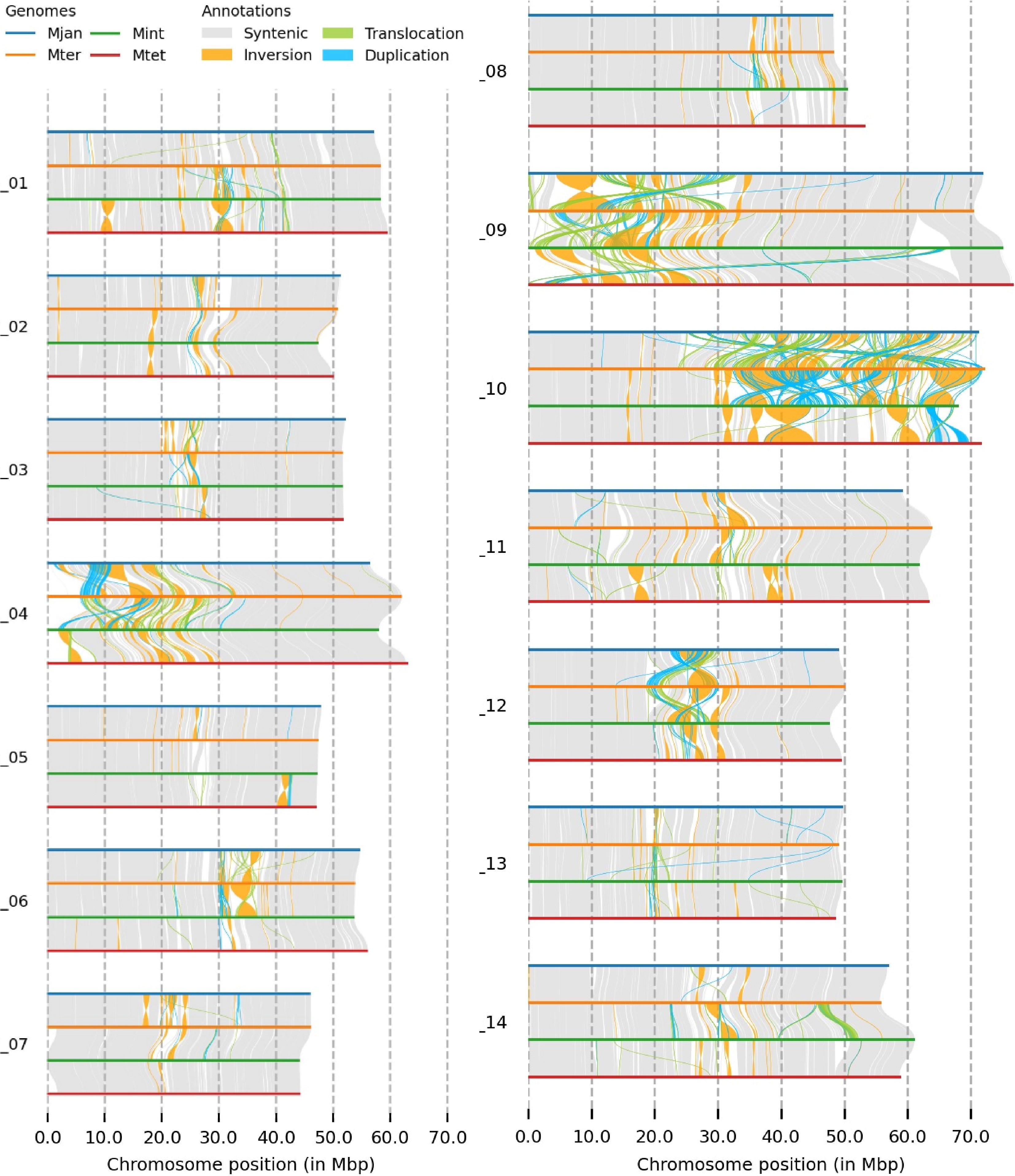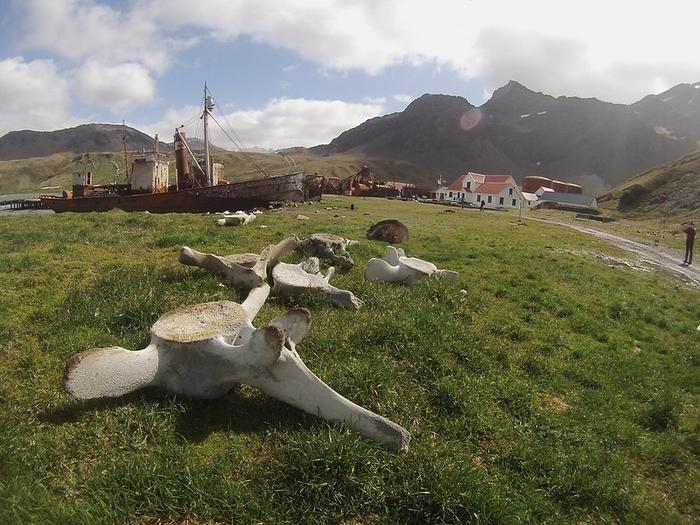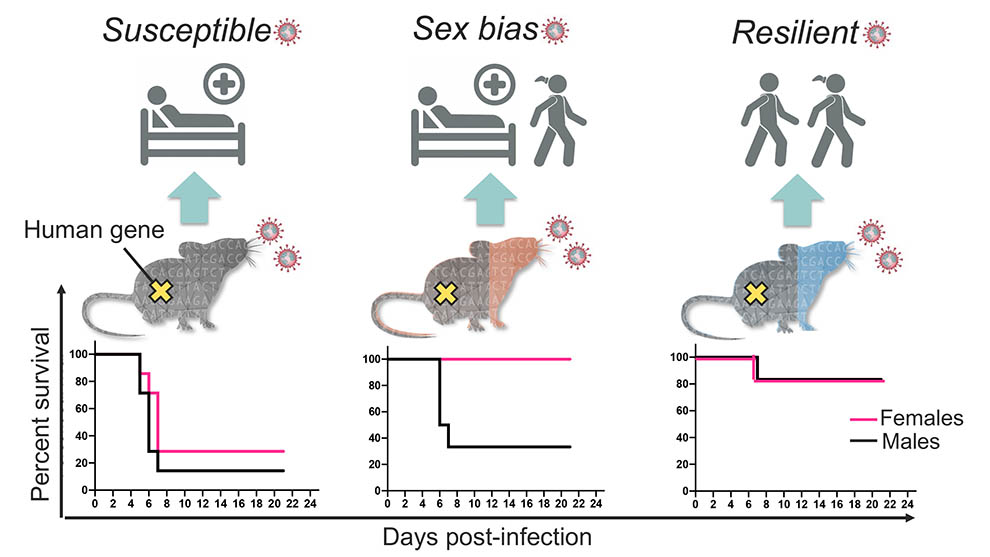Researchers investigated the population characteristics of two hybrid crucian carp strains based on one nuclear gene molecular marker, Transferrin (Tf). Interestingly, the nucleotide diversity of Tf alleles in cultured populations exceeded that of wild populations, and the network and genetic structure analyses failed to distinguish between wild and cultured populations. Additionally, AMOVA analysis indicated genetic differentiation among all six populations, the majority of the genetic variation (92.00%) was observed within populations. These findings providing an alternative perspective for germplasm evaluation of hybrid varieties and crucian carp breeding.
Tag: Genetic Diversity

Comprehensive genome sequencing of all four Macadamia species unlocks new potential for crop improvement
A research team has successfully sequenced and assembled the genomes of all four Macadamia species, marking a significant advance in crop improvement efforts for this commercially valuable nut.
Deeper Corals May Help Shallow Reefs Recover in the Florida Keys
Using blushing coral star and genomic DNA analyses, researchers have uncovered vital links between coral populations at varying depths. They identified four distinct genetic lineages, finding strong connectivity between shallow and mesophotic populations. Importantly, mesophotic reefs emerged as crucial reproductive sources, particularly in the Lower and Upper Keys. Corals from these deeper zones hold significant potential to replenish and restore the declining shallow reefs in the Florida Keys National Marine Sanctuary.
Genomic treasure hunt: unraveling the conservation conundrum of sinojackia
A pivotal study unveils the genetic blueprint of the endangered Jacktree, shedding light on the molecular factors hindering its germination. The research highlights the challenges posed by the tree’s highly lignified pericarps, which serve as both a protective feature and a significant barrier to seed propagation, underscoring the need for targeted genetic and conservation interventions.
Unveiling the Genetic Tapestry of Australian Citrus: Insights into Phylogenetic Relationships and Evolutionary History
A research team conducted a comprehensive analysis of phylogenetic relationships among Australian citrus species and 13 international accessions, shedding light on their genetic diversity and evolutionary history.
From wild relatives to super tomatoes: unearthing new genetic potential
Advancing the frontiers of agricultural genetics, a newly developed eight-way tomato Multiparental advanced generation intercross (MAGIC) population serves as a rich genetic resource that unlocks diverse traits from wild tomato species.
Fruit of knowledge: genomic study illuminates mango’s heritage and future
A new study has mapped the genetic makeup of mango, revealing its genomic diversity and population structure that influence key agronomic traits. The research identifies genetic differentiation among mango populations and discovers candidate genes linked to flowering, fruit weight, and aroma compounds, essential for advancing mango breeding through genomic-assisted methods.
Advances in Bermudagrass Research Highlight Genetic Insights and Future Potential for Environmental Resilience
A research team has reviewed significant progress in understanding the growth and stress response mechanisms in bermudagrass, a widely distributed and valuable grass species.
Chloroplast Genome Study Separates C. meiocarpa and C. oleifera to Enhance Tea-Oil Camellia Breeding and Genetic Research
A research team sequenced and analyzed the complete chloroplast genomes of C. oleifera and C. meiocarpa, uncovering significant differences that clarified their phylogenetic relationship.
Polar Bears in Canada’s High Arctic Are the Most Vulnerable to Climate Change, According to New Genetic Analysis
Researchers from leading institutions including Polar Bears International, Environment and Climate Change Canada, the San Diego Zoo Wildlife Alliance, the University of Manitoba, and MacEwan University have analyzed all of Canada’s polar bear populations and found that the most northern polar bears, those in Canada’s High Arctic, are less likely to be able to adapt to a rapidly warming Arctic.
New HbGBTS80K Liquid SNP Chip Revolutionizes Rubber Tree Breeding
A research team developed and validated a liquid SNP chip named ‘HbGBTS80K’, which includes 80,080 SNPs evenly distributed across 18 chromosomes.
Using AI to scrutinize, validate theories on animal evolution
By harnessing the power of machine learning, researchers have constructed a framework for analyzing what factors most significantly contribute to a species’ genetic diversity.
Peeling back the genetic layers of stone fruit domestication
Unraveling the genetic underpinnings of stone fruits, a pivotal study explores the genomic landscape of apricot, peach, plum, and mei. It uncovers the signatures of selection pressures driving their domestication and adaptation, revealing a rich tapestry of genetic diversity and evolutionary convergence that shapes the traits we value in these crops.
Unlocking the almond genome: unraveling the secrets of heterozygosity
A pivotal study has unlocked the genetic complexities of almonds, highlighting a significant degree of heterozygosity and the influence of structural variants on gene expression. The research rigorously delineates allele-specific expression patterns, offering vital insights into the genetic traits that govern almond variability.
Unraveling the DNA mystique of Saposhnikovia divaricata: new horizons in herbal medicine
In a pioneering study, scientists have decoded the genetic blueprint of Saposhnikovia divaricata, a traditional medicinal herb. The research provides a detailed genome sequence, shedding light on the plant’s evolutionary adaptations and the genetic foundations of its therapeutic benefits.
Blossoming insights: genetic mechanisms behind flower form
A cutting-edge study has uncovered the pivotal role of the APETALA3–3 ortholog in shaping the diverse morphologies of petals in Delphinium anthriscifolium. This gene, previously known for its function in petal identity, is now revealed to be a key player in the intricate process of petal differentiation, offering a profound understanding of floral evolution and opening avenues for future botanical research and breeding innovations.
Melon Flavor Decoded: The Genetic Keys to Aromatic Diversity
This study investigates the genetic regulation of volatile production in melons, identifying over 1000 quantitative trait loci (QTLs) affecting aroma and ripening. Key findings highlight specific chromosomes that influence ester and aldehyde levels, contributing to unique aromas in climacteric and non-climacteric melons, aiding breeding programs aimed at enhancing fruit quality.
Severe Hurricanes Boost Influx of Juveniles and Gene Flow in a Coral Reef Sponge
A study is the first to evaluate substrate recolonization by sponges in the U.S. Virgin Islands after two catastrophic storms using genetic analyses to understand how much clonality verses sexual recruitment occurs on coral reefs post-storms.
Bottlenecks and beehives: how an invasive bee colony defied genetic expectations
For more than a decade, invasive Asian honeybees have defied evolutionary expectations and established a thriving population in North Queensland, much to the annoyance of the honey industry and biosecurity officials.
RUDN agronomists showed how to use natural “poison” to improve millet yields
RUDN University agronomists have shown that in low concentrations colchicine improves millet yield and grain quality. Besides, it does not hurt the genetic diversity of subsequent generations.
Cracking the code: Genome sequencing reveals why songbirds are larger in colder climates
Scientists have unlocked the genetic basis underlying the remarkable variation in body size observed in song sparrows, one of North America’s most familiar and beloved songbirds. This discovery also provides insights into this species’ capacity to adapt to the challenges of climate change.

DNA from discarded whale bones suggests loss of genetic diversity due to commercial whaling
Commercial whaling in the 20th century decimated populations of large whales but also appears to have had a lasting impact on the genetic diversity of today’s surviving whales, new research from Oregon State University shows.

Variable patient responses to SARS-CoV-2 infection are mimicked in genetically diverse mice
Researchers at The Jackson Laboratory have created a panel of genetically diverse mice that accurately model the highly variable human response to SARS-CoV-2 infection.
UCLA biobank study reveals disease risk, heath care use among LA’s diverse population
The research underscores the limitations of the health care system’s frequent reliance on broad self-reported race and ethnicity data to assess patients’ risk of developing disease, and the findings also support expanding genetic screening to more groups.
Illinois study reveals genetic secrets of America’s favorite snack
In its simplest form, popcorn is pretty uncomplicated. Most supermarket varieties offer the choice of two kernel colors, yellow or white, and two kernel shapes, pointed or pearl. When popped, the flake typically expands into one of two shapes: mushroom or butterfly. But there’s more to popcorn than meets the eye. New research from the University of Illinois Urbana-Champaign reveals a wealth of untapped diversity lurking in popcorn’s genetic code.

Ancient DNA reveals the multiethnic structure of Mongolia’s first nomadic empire
To better understand the inner workings of the seemingly enigmatic Xiongnu empire, an international team of researchers at the Max Planck Institutes for Evolutionary Anthropology (MPI-EVA) and Geoanthropology (MPI-GEO), Seoul National University, the University of Michigan, and Harvard University conducted an in-depth genetic investigation of two imperial elite Xiongnu cemeteries along the western frontier of the empire: an aristocratic elite cemetery at Takhiltyn Khotgor and a local elite cemetery at Shombuuzyn Belchir.
Ancient African empires’ impact on migration revealed by genetics
Traces of ancient empires that stretched across Africa remain in the DNA of people living on the continent, reveals a new genetics study led by UCL researchers.

Babies or beauty?
A new study published in Science Advances has not only revealed that an ALHS in Colias butterflies has an ancient origin, but also determined the mechanisms contributing to its persistence over millions of generations.
Family tree secrets: Island tree populations older, more diverse than expected
It’s often assumed that island plant and animal populations are just the simple, fragile cousins of those on the mainland.
Human expansion 1,000 years ago linked to Madagascar’s loss of large vertebrates
The island of Madagascar—one of the last large land masses colonized by humans—sits about 250 miles (400 kilometers) off the coast of East Africa.
Same same but different
A method for detecting intraspecies genomic diversity of uncultivated bacterial DNA has been developed. This enhanced MAG method’s ability to detect previously overlooked variations focuses on the DNA sequence and structural traits of the genome. The spectrum of microdiversity in environmental bacterial genomes has been found to be broader than expected.
DNA profiling solves Australian rabbit plague puzzle
Rabbits were first introduced to mainland Australia when five domestic animals were brought to Sydney on the First Fleet in 1788. At least 90 subsequent importations would be made before 1859 but none of these populations became invasive.

Microbial ´dark matter´: Centuries-old lava caves of Hawaiʻi Island contain thousands of unknown bacterial species
The lava caves, lava tubes and geothermal vents on the big island of Hawaiʻi have higher bacterial diversity than scientists expected, reports a new study in Frontiers in Microbiology.
More Genome Copies in Switchgrass Linked to More Climate Flexibility and Adaptation
Roughly half of all flowering plants are polyploid, meaning that they have more than two sets of chromosomes. Scientists believe polyploidy drives adaptation by giving organisms more genetic diversity. This research compared tetraploid (four copies) and octoploid (eight copies) varieties of switchgrass, and found that octoploid switchgrasses are generalists, able to tolerate a broad range of environmental conditions and expand their range into new areas.
Study points to Armenian origins of ancient crop with aviation biofuel potential
Camelina, also known as false flax or Gold-of-Pleasure, is an ancient oilseed crop with emerging applications in the production of sustainable, low-input biofuels. Multidisciplinary research from Washington University in St. Louis is revealing the origins and uses of camelina and may help guide decisions critical to achieving its potential as a biofuel feedstock for a greener aviation industry in the future.
Archaeology: First Pompeiian human genome sequenced
The first successfully sequenced human genome from an individual who died in Pompeii, Italy, after the eruption of Mount Vesuvius in 79 CE is presented this week in a study published in Scientific Reports.
Critically endangered vaquita porpoise not doomed to extinction by inbreeding depression
Unchecked gillnetting has pushed the world’s smallest porpoise to the brink of extinction: there are roughly 10 vaquitas remaining in the Gulf of California in Mexico.
Flipping the “genetic paradox of invasions”
The green crab, Carcinus maenas, is considered a globally distributed invasive species, an organism introduced by humans that eventually becomes overpopulated, with increased potential to negatively alter its new environment. Traditionally, it’s been assumed that successful populations contain high genetic diversity, or a variety of characteristics allowing them to adapt and thrive. On the contrary, the green crab – like many successful invasive populations – has low genetic diversity, while still spreading rapidly in a new part of the world.
Why is it important to increase genetic diversity in crops, especially in soybean?
U.S. soybean breeding programs have slowed as current varieties are too closely related
Informing the next generation of biodiversity goals
According to an international team of researchers, a ‘safety net’ made up of multiple, interlinked and ambitious goals is needed to tackle nature’s alarming decline.
Key Alzheimer’s gene acts differently in non-Europeans
A gene called apolipoprotein E (APOE), long implicated in Alzheimer’s disease, has two variants that act differently among Caribbean Hispanics depending on the ancestral origin, according to a study published in Alzheimer’s and Dementia, the journal of the Alzheimer’s Association.